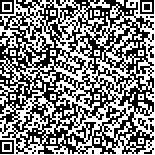| 引用本文: | 余琼,袁越,程浩,唐子鸣,郭霖,谢青海.APC接头连接的T型全预制剪力墙抗震试验[J].哈尔滨工业大学学报,2025,57(5):100.DOI:10.11918/202402009 |
| YU Qiong,YUAN Yue,CHENG Hao,TANG Ziming,GUO Lin,XIE Qinghai.Test on seismic behavior of T-shaped fully precast shear walls with vertical reinforcements spliced by grouted sleeve lapping connector[J].Journal of Harbin Institute of Technology,2025,57(5):100.DOI:10.11918/202402009 |
|
| |
|
|
| 本文已被:浏览 10次 下载 17次 |

码上扫一扫! |
|
|
| APC接头连接的T型全预制剪力墙抗震试验 |
|
余琼1,袁越1,程浩2,唐子鸣1,郭霖3,谢青海3
|
|
(1.同济大学 土木工程学院,上海 200092;2.上海市岩土工程检测中心有限公司,上海 200040; 3.山西建筑工程集团有限公司,太原 030006)
|
|
| 摘要: |
| 为研究套筒灌浆搭接接头(简称APC接头)连接的T型全预制剪力墙的抗震性能,在I、II型APC接头的基础上,对1片现浇墙和2片预制墙进行拟静力试验。结果表明:现浇墙初始水平裂缝出现在基础顶面,由于套筒对混凝土的约束,预制墙的初始水平裂缝出现在套筒上方;极限状态下,试件均为弯剪破坏,现浇墙墙脚边缘混凝土压碎、钢筋压屈,预制墙为套筒上方钢筋压屈、混凝土压碎、套筒外混凝土剥落;在开裂、屈服、峰值荷载,刚度、延性和耗能能力方面,采用I型套筒的预制墙与现浇墙相当,而采用II型套筒的预制墙大于现浇墙;两种套筒在预制剪力墙的受力过程中保持弹性状态,均能有效传递钢筋应力;预制试件平面外位移在加载过程中出现负向累积,但相同加载级时预制墙与现浇墙平面外位移绝对值相当。 |
| 关键词: T型全预制剪力墙 套筒灌浆搭接接头 搭接连接 拟静力试验 抗震性能 |
| DOI:10.11918/202402009 |
| 分类号:TU398.2 |
| 文献标识码:A |
| 基金项目:上海市科技计划项目(21ZR1468300) |
|
| Test on seismic behavior of T-shaped fully precast shear walls with vertical reinforcements spliced by grouted sleeve lapping connector |
|
YU Qiong1,YUAN Yue1,CHENG Hao2,TANG Ziming1,GUO Lin3,XIE Qinghai3
|
|
(1.College of Civil Engineering, Tongji University, Shanghai 200092, China; 2.Shanghai Geotechnical Engineering Testing Center Co., Ltd., Shanghai 200040, China; 3.Shanxi Construction Engineering Group Co., Ltd., Taiyuan 030006, China)
|
| Abstract: |
| To study the seismic performance of T-shaped fully precast shear walls with vertical reinforcement connected by sleeve grouted lapping connectors (referred to as APC connectors), quasi-static tests were conducted on one cast-in-place wall and two pieces of precast wall based on type I and type II sleeve grouted lapping connectors. The results showed that the initial horizontal cracks of the cast-in-place wall appeared at the top surface of the foundation, and the initial horizontal cracks of the precast wall appeared above the sleeve due to the restraint of the concrete by the sleeve. In the limit state, the specimens were all flexural-shear damage. In the cast-in-place wall, concrete crushed and rebar flexed at the edge of the footing, along with buckling of the rebars. For the precast wall, failure was characterized by buckling of the rebars above the sleeve, concrete crushing, and spalling of the concrete outside the sleeve. In terms of cracking load, yield load, peak load, stiffness, ductility and energy dissipation capacity, precast walls with type I sleeves were comparable to cast-in-place walls, while precast walls with type II sleeves were greater than cast-in-place walls. Both types of sleeves remained elastic during the loading process of precast shear walls, and both were effective in transmitting reinforcement stresses. The out-of-plane displacements of the precast specimens accumulated in the negative direction during loading, but the absolute values of out-of-plane displacements of the prefabricated walls were comparable to those of the cast-in-place walls at the same load level. |
| Key words: T-shaped fully precast shear wall all vertical members precasted in concrete structures(APC) connectors lapping connection quasi-static test seismic performance |
|
|
|
|







